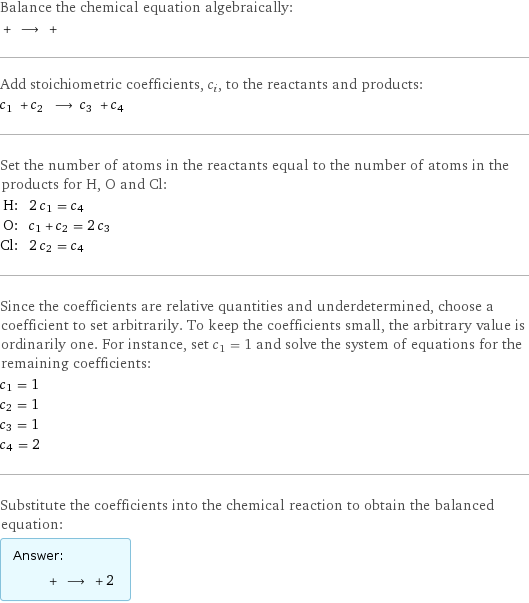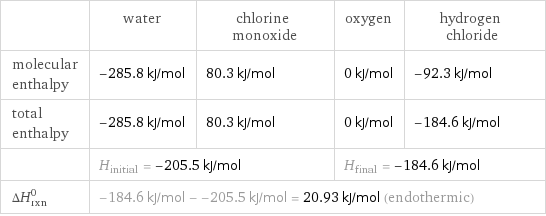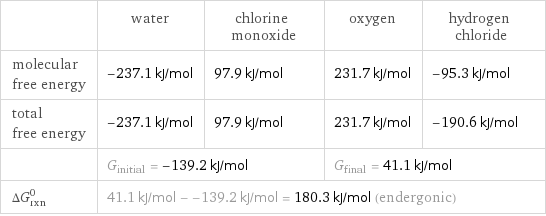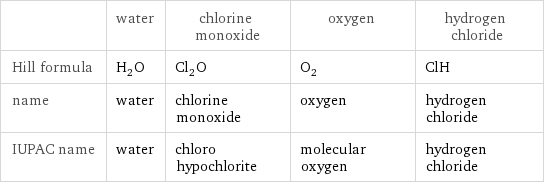Input interpretation

water + chlorine monoxide ⟶ oxygen + hydrogen chloride
Balanced equation

Balance the chemical equation algebraically: + ⟶ + Add stoichiometric coefficients, c_i, to the reactants and products: c_1 + c_2 ⟶ c_3 + c_4 Set the number of atoms in the reactants equal to the number of atoms in the products for H, O and Cl: H: | 2 c_1 = c_4 O: | c_1 + c_2 = 2 c_3 Cl: | 2 c_2 = c_4 Since the coefficients are relative quantities and underdetermined, choose a coefficient to set arbitrarily. To keep the coefficients small, the arbitrary value is ordinarily one. For instance, set c_1 = 1 and solve the system of equations for the remaining coefficients: c_1 = 1 c_2 = 1 c_3 = 1 c_4 = 2 Substitute the coefficients into the chemical reaction to obtain the balanced equation: Answer: | | + ⟶ + 2
Structures

+ ⟶ +
Names

water + chlorine monoxide ⟶ oxygen + hydrogen chloride
Reaction thermodynamics
Enthalpy

| water | chlorine monoxide | oxygen | hydrogen chloride molecular enthalpy | -285.8 kJ/mol | 80.3 kJ/mol | 0 kJ/mol | -92.3 kJ/mol total enthalpy | -285.8 kJ/mol | 80.3 kJ/mol | 0 kJ/mol | -184.6 kJ/mol | H_initial = -205.5 kJ/mol | | H_final = -184.6 kJ/mol | ΔH_rxn^0 | -184.6 kJ/mol - -205.5 kJ/mol = 20.93 kJ/mol (endothermic) | | |
Gibbs free energy

| water | chlorine monoxide | oxygen | hydrogen chloride molecular free energy | -237.1 kJ/mol | 97.9 kJ/mol | 231.7 kJ/mol | -95.3 kJ/mol total free energy | -237.1 kJ/mol | 97.9 kJ/mol | 231.7 kJ/mol | -190.6 kJ/mol | G_initial = -139.2 kJ/mol | | G_final = 41.1 kJ/mol | ΔG_rxn^0 | 41.1 kJ/mol - -139.2 kJ/mol = 180.3 kJ/mol (endergonic) | | |
Chemical names and formulas

| water | chlorine monoxide | oxygen | hydrogen chloride Hill formula | H_2O | Cl_2O | O_2 | ClH name | water | chlorine monoxide | oxygen | hydrogen chloride IUPAC name | water | chloro hypochlorite | molecular oxygen | hydrogen chloride